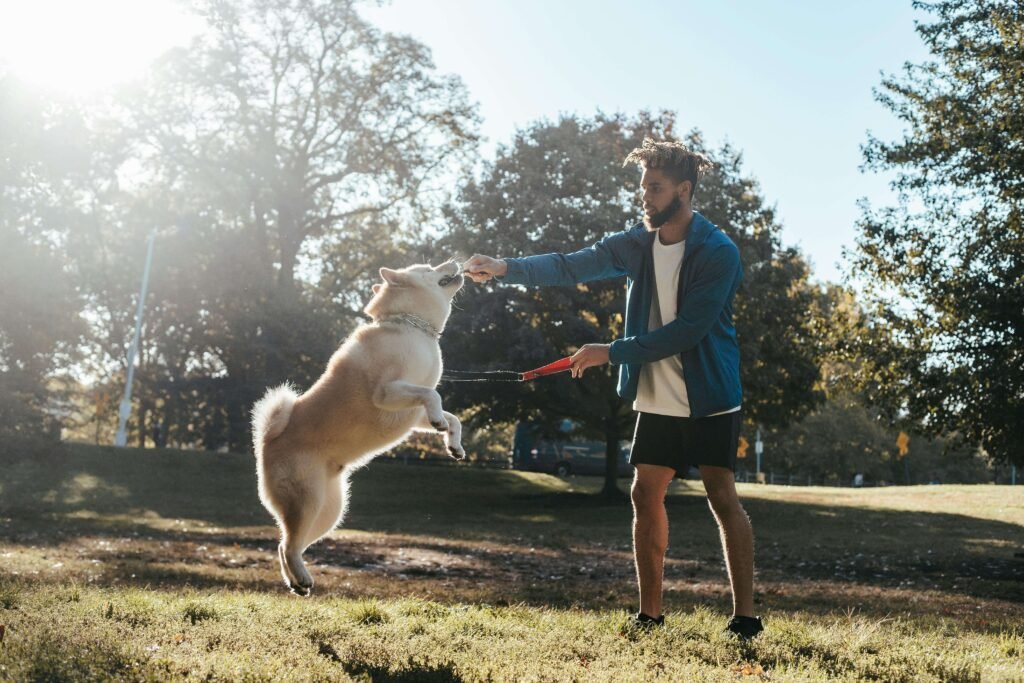
Top 5 Training Tips for New Dog Owners
Bringing a new dog into your home is an exciting and rewarding experience. However, it also comes with the responsibility of training your furry friend to ensure they are well-behaved and happy. Whether you’re a first-time dog owner or adding a new member to your pet family, these top 5 training tips will help you get started on the right paw!
1. Start with Basic Commands
Training your dog with basic commands is the foundation of good behavior. Begin with simple commands like “sit,” “stay,” “come,” and “down.” These commands are essential for managing your dog’s behavior and ensuring their safety.
How to Teach Basic Commands:
- Sit: Hold a treat close to your dog’s nose and move your hand up, allowing their head to follow the treat and their bottom to lower to the ground. Once they are in the sitting position, say “sit,” give them the treat, and share affection.
- Stay: Ask your dog to “sit.” Then open the palm of your hand in front of you and say “stay.” Take a few steps back. If they stay, reward them with a treat and affection.
- Come: Put a leash on your dog. Go down to their level and say, “come,” while gently pulling on the leash. When they come to you, reward them with a treat and affection.
2. Use Positive Reinforcement
Positive reinforcement is one of the most effective training methods. It involves rewarding your dog with treats, praise, or playtime when they exhibit good behavior. This encourages them to repeat the behavior in the future.
Benefits of Positive Reinforcement:
- Builds Trust: It helps to build a strong bond of trust between you and your dog.
- Boosts Confidence: Encourages your dog to be confident and eager to learn.
- Strengthens Good Behavior: Reinforces desirable behavior, making it more likely to be repeated.
3. Master Leash Training
Leash training is crucial for both your dog’s safety and your sanity. A dog that pulls on the leash can be challenging to manage and may even cause accidents.
Tips for Leash Training:
- Start Indoors: Begin by letting your dog wear the leash indoors without holding it. Let them get used to the feeling.
- Teach Walking Manners: When you start walking outside, keep the leash short but loose. If your dog starts to pull, stop walking. Only resume when the leash is slack.
- Reward Good Behavior: Reward your dog with treats and praise when they walk nicely on the leash without pulling.
4. Socialize Early
Socialization is critical for your dog’s development and helps prevent behavior problems. Introduce your dog to different people, environments, and other animals to make them well-adjusted and comfortable in various situations.
Steps to Socialize Your Dog:
- Meet New People: Invite friends over to meet your dog. Make these interactions positive by giving your dog treats and praise.
- Visit Different Places: Take your dog to various places like parks, pet stores, and busy streets to expose them to different sights, sounds, and smells.
- Playdates with Other Dogs: Arrange playdates with other friendly dogs to help your dog learn how to interact appropriately with their peers.
5. Be Consistent
Consistency is key to successful dog training. Dogs thrive on routine and clear expectations. Make sure everyone in your household is on the same page regarding the rules and commands you use.
How to Maintain Consistency:
- Set a Schedule: Stick to regular feeding, walking, and training times.
- Use the Same Commands: Ensure everyone uses the same words and gestures for commands.
- Reinforce Rules: Be consistent with enforcing rules, such as not allowing your dog on furniture if that’s the house rule.
Conclusion
Training your new dog takes time, patience, and consistency, but the rewards are well worth the effort. By starting with basic commands, using positive reinforcement, mastering leash training, socializing early, and maintaining consistency, you’ll be well on your way to raising a well-behaved and happy dog. Remember, every dog is unique, so tailor your training approach to suit your dog’s personality and needs. Happy training!
